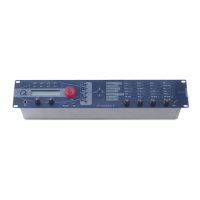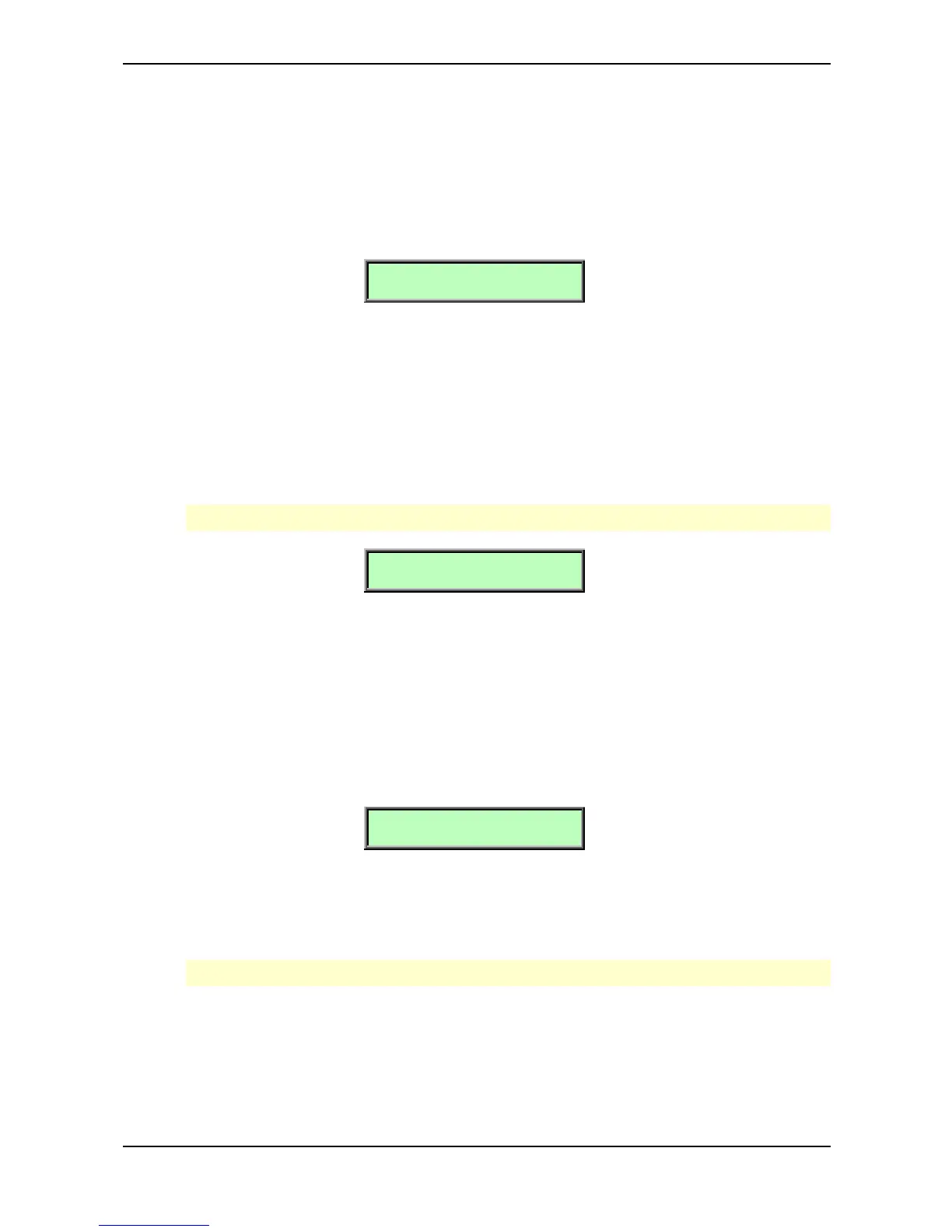Sound Parameters – LFO Section
Waldorf microQ User´s Manual 118
Delay 0…127
The Delay parameter works differently depending on the setting of the Fade parameter in the LFO
edit menu:
• When Fade is set to +00…+63, the LFO signal output is zero for the time set with the Delay
parameter. After this time, the LFO is faded in and then runs with full magnitude.
• When Fade is set to –64…-01, the LFO runs with full magnitude for the time set with the
Delay parameter. After this time, the LFO is faded out to zero.
LFO2 Spd.! Fade
056 ! +20
LFO2 Spd. – LFO 2 Speed 0...127
Determines the frequency of LFO 2. For the sake of completeness this parameter can be also found
here in the LFO Edit Menu. See "LFO 1 Speed" above.
Fade out 64…in 63
Controls the speed with which the LFO is faded in or out. With this parameter you can create slowly
rising or falling modulations that might create interest when routed to pitch or volume.
Please see the LFO Delay parameter on page 116 for further information.
LFO2 Sync!Startphase
Off ! free
LFO2 Sync On / Off
For the sake of completeness this parameter can be also found in the LFO Edit Menu. See "LFO 1
Sync" above.
Phase free, 000°…360°
Controls the initial phase of the LFO when a new note is started. Free means that the LFO isn’t
restarted on a new note but runs freely while other values set the LFO phase to the respective offset in
degrees.
LFO2 Clk !Keytrack
Off ! +000%
LFO2 Clk - LFO 2 Clocked Off / On
When LFO2 Clk is activated, the LFO is synced to the global Tempo of the microQ. The LFO Speed
setting for LFO 2 is changed to offer musically meaningful values.
Please read the section "The Tempo" on page 124 for further information.
Keytrack -200%...+196%
Determines how much the speed of the LFO depends on the MIDI note number. The reference note
for Keytrack is E3, note number 64. For positive settings, the LFO speeds up on notes above the
reference note, for negative settings the LFO slows down when higher notes are played and vice

